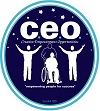Links:
814 Direct Supports Professional 2-2023
901 EMPLOYEE HANDBOOK FINAL DRAFT CLF 3-2024
Gentle Teaching:
Creative Empowerment Opportunities relies on the practice of Gentle Teaching, a philosophy focused on changing ourselves for the better, rather than trying to make others change. Gentle Teaching is about unconditional love, embracing every Person’s gifts, and encouraging group involvement, rather than isolation. The teaching practice involves the use of the Tools, Pillars, and 6 Elements of the Culture of Gentleness. The tools of Gentle Teaching include the use of our hands, eyes, words, and our presence. While these tools can convey negative emotions, such as anger and fear, they can also be used to create positive feelings of safety, warmth, and helpfulness. Through the positive use of our tools, we can hope to reflect the 4 Pillars of the Gentle Teaching practice. These pillars are Safe, Loved, Loving, and Engaged. These are all aspects that we wish to incorporate into the environments of our Persons Served. Lastly are the 6 Elements of Gentleness: Safe, Loved, Positive Interactions, Demands, Structure, and Transition. As helping professionals, we aim to make our Persons Served feel Safe and Loved. In addition, we want as many Positive Interactions and as few straining Demands as possible with our consumers. In order for all of this to work cohesively, we also need to employ Structure and Transitions techniques. Structures can create necessary routines for both the Person Served and the staff. Transition techniques include those that help to lessen the stress of daily transitions for the Persons Served, including getting up in the morning or moving between classrooms. Gentle Teaching allows us, as staff, to create the best possible environments for and relationships with the people we serve every day.
